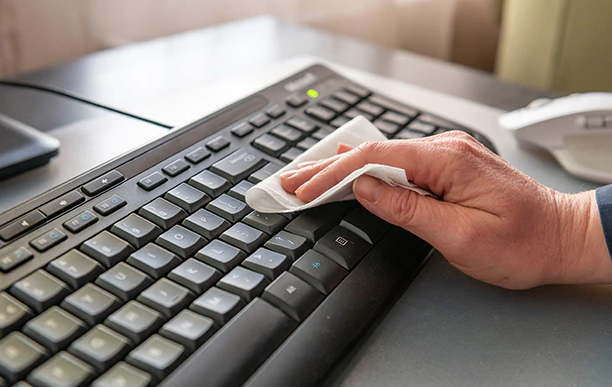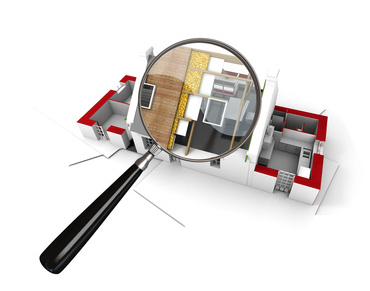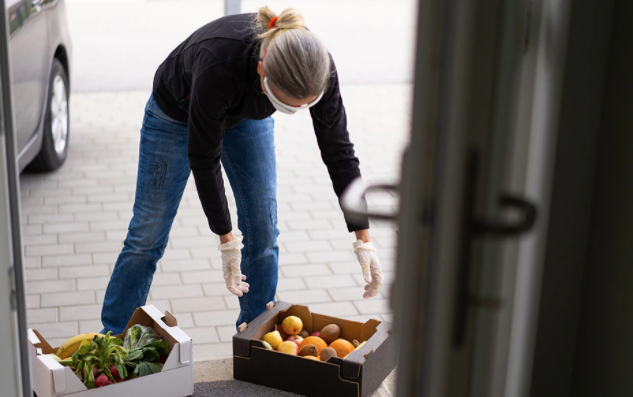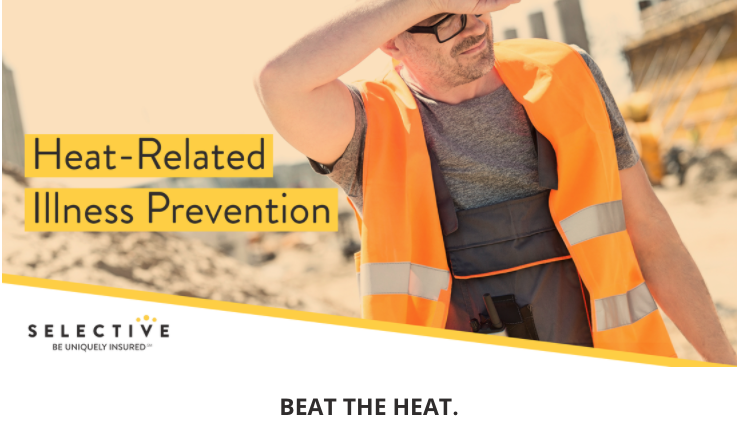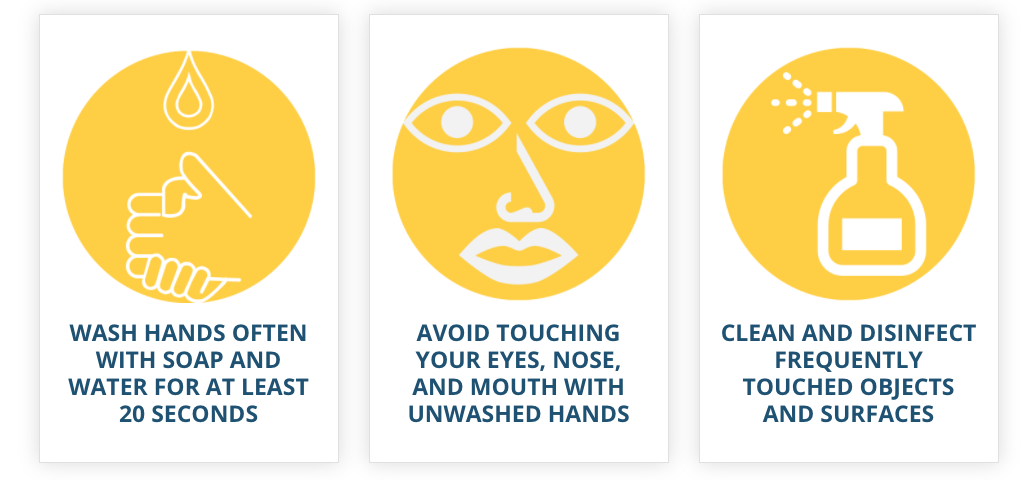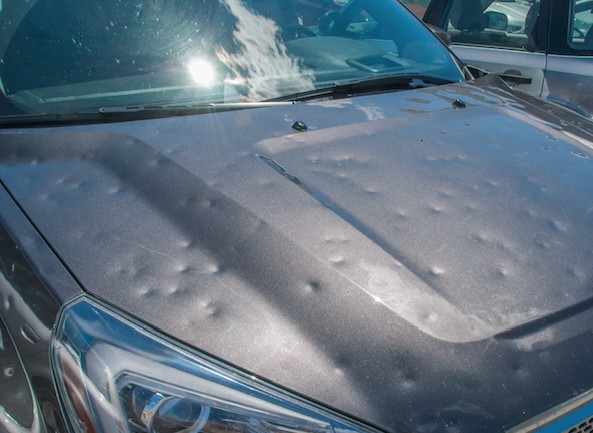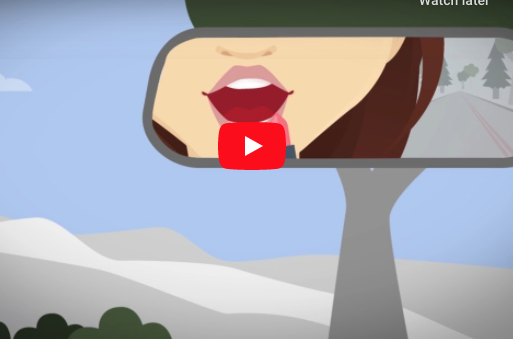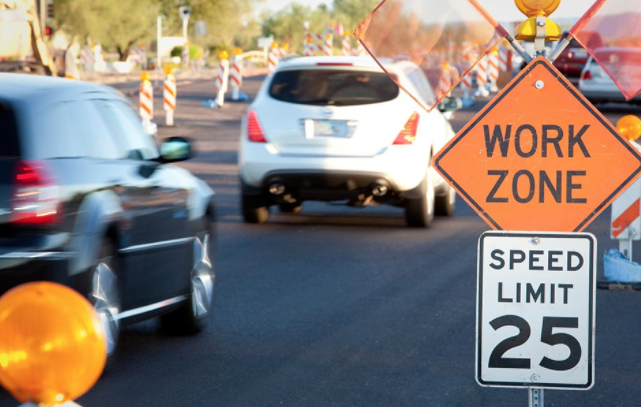How to Talk with Your Teen About Safe Driving

There are plenty of difficult topics to talk about with your children, but perhaps the one that strikes terror in many parents is the talk that precedes handing over the keys to the family car. Yes, that talk. We may joke about it, but talking to teens about safe driving is one of the critical chats that parents need to get right, for the safety of their child and anyone else that’s on the road while they’re behind the wheel.
The Centers for Disease Control and Prevention notes that car crashes are the leading cause of death for U.S. teens.1 Often, it is their immaturity and lack of driving experience that are the two main factors leading to a high crash rate among teens. Lack of experience affects their recognition of and response to hazardous situations, and may result in dangerous practices such as speeding and tailgating, according to the Insurance Information Institute.2
How can you help your young adult become a safer driver? Here are five tips to help you talk to your child about safe driving:
Be confident. Know that you can positively influence your young driver’s behavior behind the wheel.
Set a good example. Be a safe driver yourself (if you are not already). Studies show that young drivers are influenced by the positive role modeling of their parents’ responsible driving behaviors.3
Know the facts about teen driving. Some teens increase their already high collision risk by speeding, drinking, driving at night, having peers as passengers and driving distracted. Likely, your state has Graduated Driver Licensing laws to help address the prevalence of risky behaviors among new drivers. Learn about these laws and resolve to enforce them.
Be a great coach. Stay calm and set clear expectations and consequences regarding dangerous driving behaviors mentioned above. Put expectations in writing in a simple parent-teen driving contract. Be encouraging. Kids, including adolescents, respond best to positive reinforcement.4
Stay involved. Monitor your teen’s behavior behind the wheel – even after your teen obtains his or her license. Continue to coach them about how to drive safely. It takes time, experience, judgment and skill to learn how to drive safely. You may want to consider installing a monitoring device that provides data on driving behaviors that need improvement. And, be realistic: you will likely need to have multiple talks with your child about safe driving.5 Read More
A Timeline for Getting Your Teen Driver on the Road Safely

Teens eager to drive often have parents equally concerned about keeping their new drivers safe. In fact, the rate of fatal crashes per mile driven for teen drivers is 3X that of drivers over age 20.1 The reality is that novice drivers can take years to develop real-world experience behind the wheel.
Until then, parents can set expectations for safe driving behaviors, provide opportunities to practice in a safe environment and stay involved, even after their teen earns a driver’s license. Help teen drivers stay safe behind the wheel by preparing them for risks on the road with this teen driver timeline.
One Year in Advance: Set a Good Example
Starting long before your teen receives his or her driver’s license, demonstrate the kind of safe driving behaviors you will expect from your teen, including never driving while distracted by technology. It should be an easier conversation when it comes to setting expectations when your teen gets behind the wheel if those expectations reflect your own behavior.
While distracted driving is dangerous for all drivers, Dr. Charlie Klauer, who studies teen risk and injury prevention at the Virginia Tech Transportation Institute, has found that the risks are much higher for novice drivers who engage in manual-visual tasks, such as texting while driving.2
Less Than a Year in Advance: Discuss Dangerous Behaviors
Parents can help teens understand how certain behaviors behind the wheel may increase the risk of a crash. These behaviors include speeding, tailgating, drowsy driving or driving under the influence of alcohol or while distracted. Engaging in two or more of these behaviors at the same time may greatly increase the risk of crashes, according to Dr. Klauer.3 Parents should discuss the importance of safe speeds, a safe following distance and being aware of potentially dangerous conditions.
Six Months in Advance: Set Specific Expectations
Talk with your teen about his or her plans for driving. If your teen plans to drive, does he or she plan to drive every day? Does he or she plan on owning a car? Discuss the potential risks of driving, including legal and financial responsibilities, which can include insurance premiums, repair costs and fines for unsafe driving. Read more
How to Help Prevent Your Boat from Sinking

A boat can be a significant investment in time and money for any level of boat enthusiast, and keeping that vessel in seaworthy condition should be top of mind for any owner. Although boats sink for a number of reasons—including inclement weather, lack of maintenance and even potential issues while still on land—many occur at the dock and can be prevented with the proper precautions. The following tips can help prevent the worst from happening to your vessel.
Improper Maintenance
Your boat requires regular maintenance to help keep it in good condition. Be aware that failing to follow the manufacturer’s maintenance guidelines could result in damage to your boat and its equipment.
First, be sure to use marine-grade parts for maintenance and repairs. Otherwise, the parts may corrode or fail prematurely.
When reconfiguring or repowering your boat, it is important to comply with the manufacturer’s guidelines. Overpowering or exceeding design weight capacities can result in very serious damages to your boat or lead to very dangerous circumstances out on the water.
Conduct regular inspections and incorporate these into your pre-departure and post-trip routines. Inspect hoses, bellows and hull penetrations, taking early corrective action at the first signs of wear or degradation.
Be sure to consult with a qualified marine technician before undertaking repairs above the operator level of maintenance. The American Boat and Yacht Council provides training on this subject and has additional reference resources relating to boat owner maintenance and repairs.
Inclement Weather
Rain, fog, wind and waves can play a role in your safety, whether underway or tied up at a dock or mooring. Always be aware of the weather conditions before stepping on board your vessel. Read More
Developing a Storm Preparedness Plan for Your Boat: Tropical Storms and Hurricanes
The summer season has the potential to bring fun-filled days and enjoyment for many boat owners. Experienced mariners know fickle weather is a fact of life, but some weather events have the potential to seriously damage or even destroy your vessel. If a tropical storm or hurricane is forecast on the horizon, having a plan in place can help you to prepare your boat for many possible circumstances — whether you plan to haul it out to dry storage or keep it in the water.

Secure and Protect Your Boat
If at all possible, consider hauling your boat out of the water. It is important to not delay this action because as a storm gets closer, your boat ramp or marina may become congested as more boat owners take the same action. Hauling can help protect your boat against damage from contact with the dock or improperly secured vessels.
Also, consider the anticipated tidal surge, and if this will overcome the location near the marina or boat ramp, consider moving the boat further inland or find a convenient area of higher ground where you have already received permission to place your boat until the storm passes. Remember, if you plan to keep your boat on land, be sure to remove the drain plug to help prevent water from collecting in your vessel.
Improve Your Docking or Mooring Location
If you cannot remove your boat from the water, plan to improve the location where it will remain docked or moored. First, double up all lines and confirm they are in good condition and long enough to accommodate storm surge. Then, inspect the cleats and dock conditions where these are to be secured. Sometimes it is best to secure additional lines around fixed pilings, if available. Add chafe gear protection where the lines will be in contact with sharp or rough edges and install extra fenders to prevent damage to the hull. Read More
5 Steps to Create a Home Inventory Checklist [Video]
After a fire, burglary or another event in which you lost possessions from your home, it may be difficult to remember the details of every one of the belongings that you have accumulated over the years. In this situation, having a current inventory of your possessions, including make and model numbers, may help you with any potential insurance claims. Taking the time to document your belongings now can help you recover faster after a loss.
Here are some steps you can use to help build your home inventory checklist.
Step 1: Take the time to walk through your property. Compiling a comprehensive home inventory takes time and effort. The more detailed your inventory, the more useful it will be if you have to make a claim. Document possessions inside your home and on your property that may be of value.
Step 2: Keep your inventory in a safe place. Creating a digital home inventory and storing it off-site will help ensure that it won’t be lost, stolen or damaged during any disaster at your home. You can also create a photo or video inventory and upload it to a cloud-based service.
First, take a picture of relevant rooms or items. Label pictures of rooms and important individual items with a description, including where you bought it and the make, model and serial number. Don’t forget to inventory items that may be out of sight in storage closets or drawers.
Second, walk through your home or office using your phone to shoot video of the contents, describing them as you go.
Finally, digital home inventory programs allow you to upload multiple photos of each item, including photos of the serial number, receipt and other identifying details. If you choose to create a paper version, consider storing it off-site in a safe deposit box.
Step 3: Update your inventory often. When you make a significant purchase, add the information to the inventory while the details are fresh in your mind. This is also a good time to delete items that you have replaced or no longer own. Read More
5 Steps on How to Declutter Your House for Sale
If you’re thinking of moving, you’ve probably heard the advice from real estate agents and stagers to cut down on clutter to appeal to potential buyers. It’s easier for someone new to imagine living in your home if they don’t have to look past cramped corners and closets. Unfortunately, it can be overwhelming to think about paring things down.

Here are five steps that can help make the process more manageable, efficient and, perhaps even fun. Plus, simplifying now will make moving that much easier.
1. Start small & choose one area at a time. If you attempt to organize your entire home in a day, you’ll end up fatigued and frustrated. Instead, choose one area to focus on, like your linen closet. Decide whether you want to save, donate or toss your towels, sheets, and blankets. You’re building up your minimalizing muscle as you move on to categories with more sentimental value.
2. Phone a friend to help declutter. Having a hard time deciding what should stay and what should go? Invite someone who can bring some objectivity to the situation as you sort through your wardrobe. Be honest about what you wear and what you don’t. Round out the afternoon by delivering your donations to your charity of choice. That will keep you from second-guessing all your hard work.
3. Rent a dumpster. Consider renting a dumpster to help you as you sort through the clutter, room by room. They’re also handy for disposing of remodeling materials you may have accumulated over the years-old carpets, extra tile, broken items from around the house. Pitch anything that is broken or no longer usable.
4. Deal with electronics and hazardous materials. Look for special collection days in your area for electronics, including old computers and video game systems. Make sure you wipe data off of old hard drives and phones before disposing of them. Hazardous material collections are a good place for old paint, thermometers and other chemicals. Read More
Effective immediately
Effective immediately, our physical office is closed and we will be telecommuting until further notice.
If you need assistance, call 410-535-0222.
Stay Safe!
How to Pack for a Move [Video]
Anyone who has moved likely can tell you a tale or two about boxes packed at the last minute, perhaps when the moving truck was already parked out front: boxes where the contents of a cabinet got swept up in one fell swoop, never to be opened again, a perfect pre-move time capsule. Don’t let this happen to you!
Having a good packing system is your friend when it comes to a move. If you follow a three-step process, you’ll eliminate what you don’t need, organize what you choose to keep and then label it so that you can find it when you arrive at your new home. Our packing tips for moving:
Step 1: Pare Down Your Belongings
Moving more than you need wastes both time and money. You may be forced to pay to dispose of furniture that’s a poor fit at your new home, when with a bit of advance planning, you can sell it before you move. Be honest with yourself about what should make it onto the moving truck.
Organize your possessions into four categories:
Trash/Recycle. Start by weeding out all of the things that you clearly don’t need, such as old toiletries, broken appliances, piles of newspapers and magazines, stained clothing unfit to donate and outdated electronics.
Sell. From old sporting equipment to a spare sofa, there may be a market for your unwanted items. Allow time to post them for sale, find a buyer and arrange for timely pick up.
Donate or give away. Ask family and friends if they are interested in taking extra items, or contact a non-profit. Some will arrange to pick up furniture and other household items in good condition.
Pack. These are things that you can’t live without. Think useful, valuable or sentimental. Remember that the single best moving tip is to reduce the amount of things you have to move. That takes time, so get started early and stay committed to being organized.
Once you have divided your items into these categories, act quickly before you change your mind. Read More
Moving Checklist and Calendar: How to Move in 30 Days
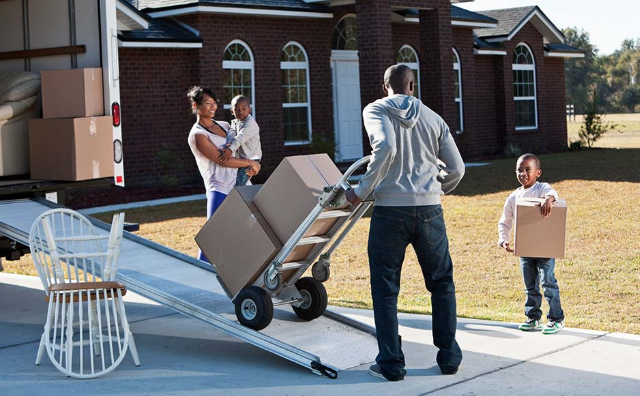
Even if you are excited to be moving to a new home, to a different state or country, or to start a new job, moving signals significant change and can cause anxiety for many of us. Moving can be especially overwhelming if you wait until the last minute. This day-by-day guide and checklist can help you pare down, prioritize and pack your possessions. Keep in mind, these tips are simply suggestions to help you prepare to make your move. Be sure to call your insurance company to discuss any changes that might be needed to your policies. Read More
We Saw the Future of Smart Homes at CES 2020
Join CNET at CES 2020 with technology expert Stephanie Duchaine and futurist Radha Mistry who show us the mix of leading-edge tech trends that are shaping the smart home of the future. Follow along as we demo devices and innovations that signal where future home tech is headed.
The views and opinions expressed in this video regarding products featured or other information are not necessarily Travelers’ views. Third-party names and trademarks referenced in this video are the property of their respective owners. Neither Travelers’ sponsorship of the video nor reference to third-party names, trademarks or products is intended as, and does not imply, sponsorship, approval or endorsement of the products, statements or other information contained in the video. Read More











